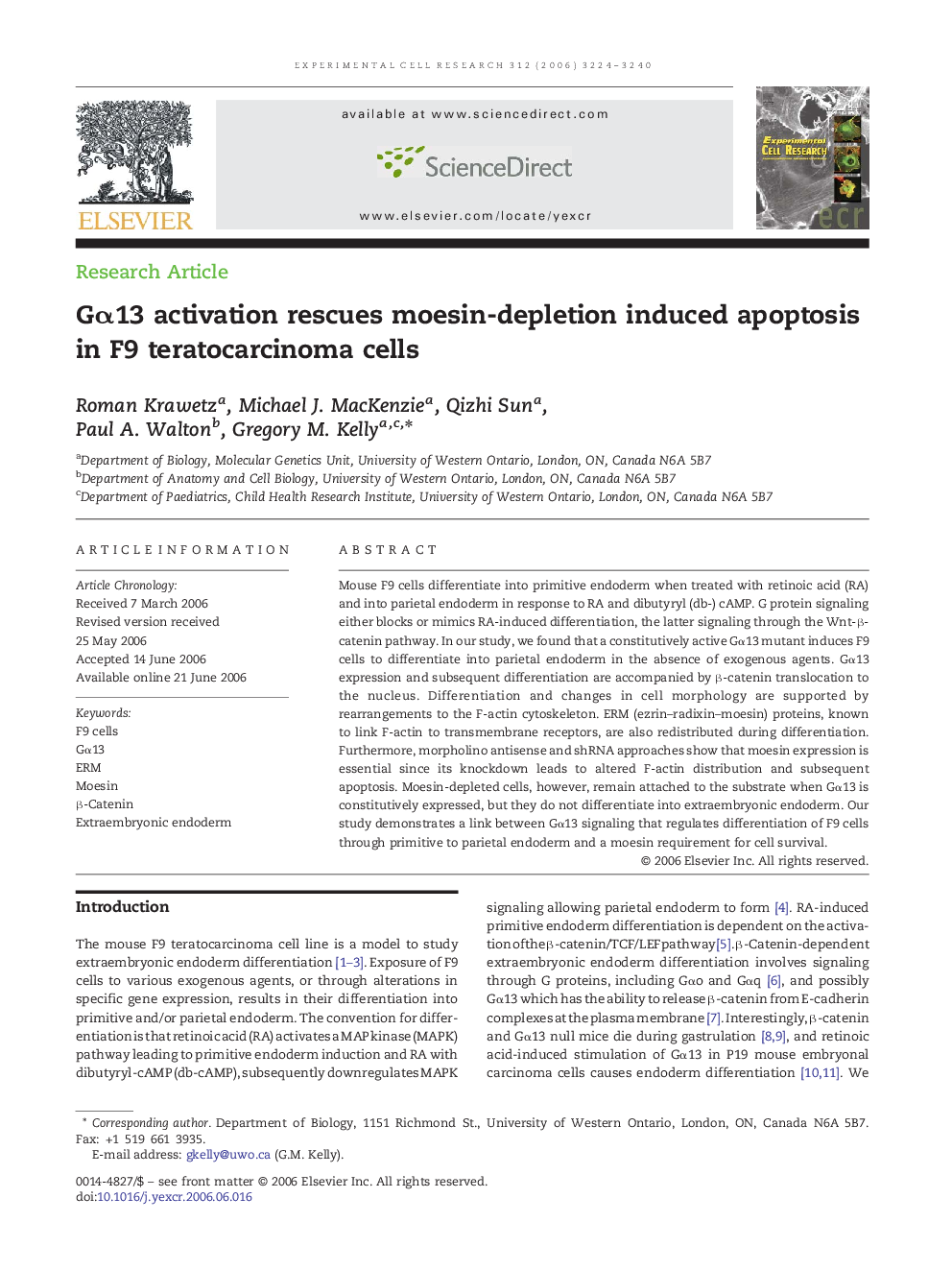| Article ID | Journal | Published Year | Pages | File Type |
|---|---|---|---|---|
| 2132836 | Experimental Cell Research | 2006 | 17 Pages |
Mouse F9 cells differentiate into primitive endoderm when treated with retinoic acid (RA) and into parietal endoderm in response to RA and dibutyryl (db-) cAMP. G protein signaling either blocks or mimics RA-induced differentiation, the latter signaling through the Wnt-β-catenin pathway. In our study, we found that a constitutively active Gα13 mutant induces F9 cells to differentiate into parietal endoderm in the absence of exogenous agents. Gα13 expression and subsequent differentiation are accompanied by β-catenin translocation to the nucleus. Differentiation and changes in cell morphology are supported by rearrangements to the F-actin cytoskeleton. ERM (ezrin–radixin–moesin) proteins, known to link F-actin to transmembrane receptors, are also redistributed during differentiation. Furthermore, morpholino antisense and shRNA approaches show that moesin expression is essential since its knockdown leads to altered F-actin distribution and subsequent apoptosis. Moesin-depleted cells, however, remain attached to the substrate when Gα13 is constitutively expressed, but they do not differentiate into extraembryonic endoderm. Our study demonstrates a link between Gα13 signaling that regulates differentiation of F9 cells through primitive to parietal endoderm and a moesin requirement for cell survival.
